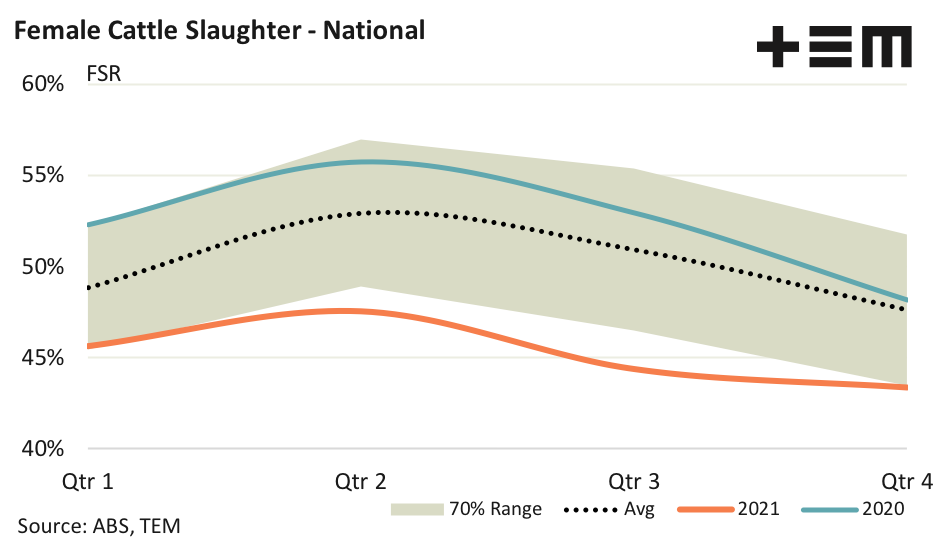That’s more like it

The Snapshot
- The female slaughter ratio (FSR) has come in at 43.4% for the final quarter of the year.
- The steady decline in the FSR since quarter two puts the annual average FSR at 45.3% for the 2021 season.
- A FSR under 47% signals a herd rebuild is underway.
The Detail
Australian Bureau of Statistics (ABS) have released their quarterly cattle slaughter data for the end of 2021 and we’re able to use this to determine where the female slaughter ratio (FSR) is sitting, so we can get a good picture on how the herd rebuild is progressing. During 2021 the FSR was slow to move lower, despite saleyard data, restocker behaviour and anecdotal evidence suggesting a firm rebuild was underway.
In February 2021, EP3 released a predictive tool that was suggesting the FSR should be nearer 42%, but included the caveat that the modelling would sometimes lead the actual figure by 3-6 months. By August 2021 we were still perplexed by the reluctance of the FSR to move toward the 42%-43% region, as much of the data and internal modelling was telling us thats where it should be.
ABS data as at December 2021 shows the FSR has come in at 43.4% for the final quarter of the year, bringing it in line with our modelling. The seasonal chart of quarterly FSR calculations (ABS only report this slaughter data quarterly now, not monthly as they used to do – so the monthly calculations are no longer available) demonstrates that the FSR has eased from 47.5% in Q2 to 44.4% in Q3 and then to 43.4% in Q4.
The steady decline in the FSR since quarter two puts the annual average FSR at 45.3% for the 2021 season.
Analysis of the annual average FSR to the annual change in the herd demonstrates the importance of the 47% threshold over the last two decades as a signal of herd rebuild or liquidation. A FSR above 47% is usually consistent with seasons when the herd is in decline, meanwhile a FSR under 47% signals a herd rebuild is underway.
Meat and Livestock Australia are anticipating a 6.1% increase to the herd over the 2021 season. Back in 2017 the FSR annual average came in at 45.5% and the herd grew by 5.6% that year and we are shaping up for a similar outcome for the 2021 season. In the coming week we will run the numbers on the FSR predictive model again to get an idea of what may be in store for 2022.



